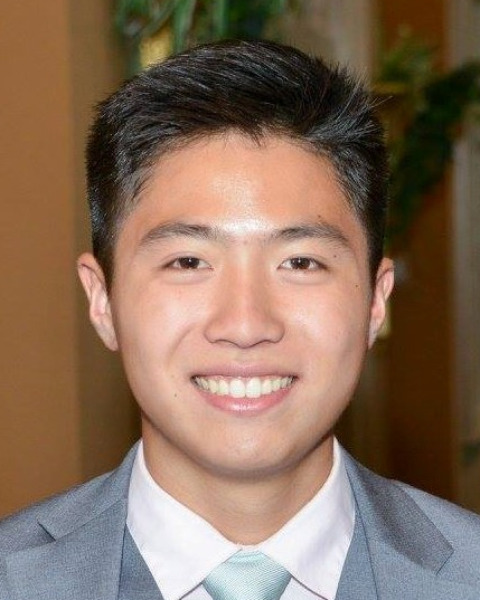Back
Poster, Podium & Video Sessions
Moderated Poster
MP41: Surgical Technology & Simulation: Training & Skills Assessment
MP41-05: Evaluating the efficacy of tissue dissection gestures during robotic simulation task
Sunday, May 15, 2022
10:30 AM – 11:45 AM
Location: Room 228
Daniel Inouye*, Runzhuo Ma, Jessica H Nguyen, Jasper Laca, Los Angeles, CA, Rafal Kocielnik, Anima Anandkumar, Pasadena, CA, Andrew J Hung, Los Angeles, CA

Daniel Inouye, BS
Keck School of Medicine of University of Southern California
Poster Presenter(s)
Introduction: We have previously developed a system for deconstructing robotic tissue dissection into its most basic elements (i.e., surgical gestures). Our objective was to investigate the efficacy of these gestures (ineffective, ideal, or erroneous) during a robotic dissection task.
Methods: Expert surgeons (>100 robotic cases) and novices (no cases) performed a dissection task using a clementine model (participants were instructed to peel the skin and remove a wedge of fruit). Videos of this task were reviewed, and each gesture was manually classified as a type of dissection gesture (e.g. cold cut, two-hand spread; Fig 1a) or supporting gesture (e.g. retraction, camera move) using a previously described dissection gestures classification system. Each gesture was subsequently labeled as: a) ineffective (did not affect the tissue as intended), b) ideal (impacted tissue as intended), or c) erroneous (resulted in error [i.e. skin tear or tissue puncture]) (Fig 1b). The proportion of different gestures were compared between expert surgeons and novices by Chi-square test. The number of total gestures, erroneous gestures, and ineffective gestures were compared between groups by Mann-Whitney U test.
Results: 6 experts, with median prior caseload 525 (range 100-3000), and 9 novices completed the simulated task, using median 183 (IQR 150-289) gestures per case. Overall, dissection gestures resulted in more errors (524/2130 (24.6%)) than supporting gestures (70/1369 (5.1%,)) (p < 0.001). In particular, the gesture Two-handed spread had the highest error rate overall (52.75%). Experts and novices utilized similar total number and selection of dissection gestures (p>0.05). Of the supporting gestures, novices exhibited more retraction (25.8% vs 18.4%, p<0.001) while experts adjusted the camera more frequently (19.7% vs 5.0%, p<0.001). Total number of errors were comparable between groups (p=0.33). While experts exhibited a higher overall error rate (19.8% vs 15.0%, p<0.001), novices had a higher ineffective gesture rate (8.7% vs 2.2%, p<0.001) (Fig 1c).
Conclusions: While the simulated task may have been overly sensitive to elicits errors, particularly among experts, we demonstrated the ability to discern the outcome of a specific dissection gesture. Such may allow feedback in surgical training down to the gesture level.
Source of Funding: none

Methods: Expert surgeons (>100 robotic cases) and novices (no cases) performed a dissection task using a clementine model (participants were instructed to peel the skin and remove a wedge of fruit). Videos of this task were reviewed, and each gesture was manually classified as a type of dissection gesture (e.g. cold cut, two-hand spread; Fig 1a) or supporting gesture (e.g. retraction, camera move) using a previously described dissection gestures classification system. Each gesture was subsequently labeled as: a) ineffective (did not affect the tissue as intended), b) ideal (impacted tissue as intended), or c) erroneous (resulted in error [i.e. skin tear or tissue puncture]) (Fig 1b). The proportion of different gestures were compared between expert surgeons and novices by Chi-square test. The number of total gestures, erroneous gestures, and ineffective gestures were compared between groups by Mann-Whitney U test.
Results: 6 experts, with median prior caseload 525 (range 100-3000), and 9 novices completed the simulated task, using median 183 (IQR 150-289) gestures per case. Overall, dissection gestures resulted in more errors (524/2130 (24.6%)) than supporting gestures (70/1369 (5.1%,)) (p < 0.001). In particular, the gesture Two-handed spread had the highest error rate overall (52.75%). Experts and novices utilized similar total number and selection of dissection gestures (p>0.05). Of the supporting gestures, novices exhibited more retraction (25.8% vs 18.4%, p<0.001) while experts adjusted the camera more frequently (19.7% vs 5.0%, p<0.001). Total number of errors were comparable between groups (p=0.33). While experts exhibited a higher overall error rate (19.8% vs 15.0%, p<0.001), novices had a higher ineffective gesture rate (8.7% vs 2.2%, p<0.001) (Fig 1c).
Conclusions: While the simulated task may have been overly sensitive to elicits errors, particularly among experts, we demonstrated the ability to discern the outcome of a specific dissection gesture. Such may allow feedback in surgical training down to the gesture level.
Source of Funding: none

.jpg)
.jpg)